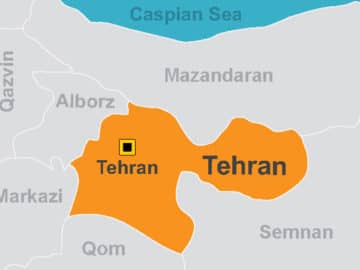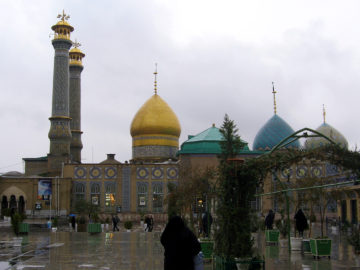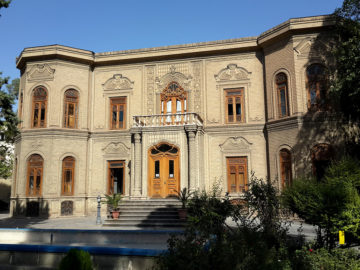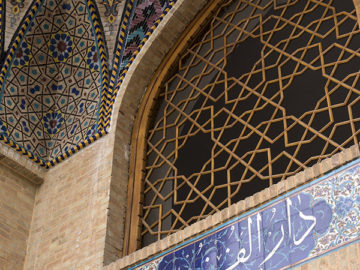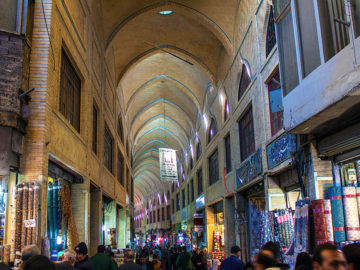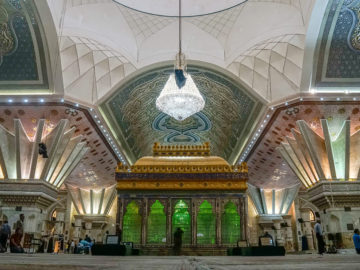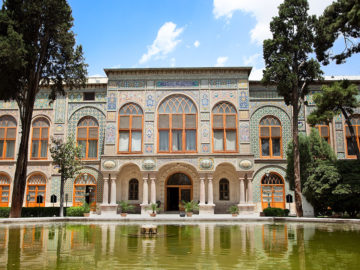
Tehran is the capital of Iran and the center of Tehran Province. It is located in the Southern hill of Alborz Mountain Range with people who speak Farsi with Tehrani accent. The northern part of the city that neighbors the mountain has colder weather, and the southern parts that are near the central parts have warmer weather.
There are many theories regarding where the name Tehran comes from. Some consider ran a suffix meaning mountain hill and put it in contrast to Shemiran that is located in the north side of Tehran. In this regard, Tehran means the “lower side” and Shemiran means the “upper side.” In a similar theory, Tehran is taken to come from “Tehram” meaning warm area and Shemiran from “Shemiram” meaning cold area. There are also those who consider Tehran as the simplified version of “Tah Ray An” meaning the end of Ray which is a city in the south of Tehran that used to be a very important and populated city. In a history book called Merat Albaladan, the writer claims that the people of Tehran went to underground refuge cells when the city was under attack, and therefore came to be known as Tehran meaning underground.
Tehran had many natural benefits like the mentioned underground cells, and being surrounded by mountains made is a suitable place for those who wanted to hide. From other hand, it was on the path of Caravans that made it an ideal place for bandits. Until Shah Tahmasp became the king and chose Qazvin as his capital, the city of Tehran was mostly inhabited by bandits and thieves.
When Safavid came to throne, the closeness of Tehran to Qazvin made it important. The Safavid kings that considered themselves as the descendants of Seyed Hamzeh who was in turn a descendant of the 7th Shiite Imam, needed a place to stay when they visited their ancestor. The mausoleum of Seyed Hamzeh was near Tehran, and he beautiful nature of it caught the attention of Shah Tahmasp I. He ordered the city to be bordered by ditch and rampart. It is said that the fortification of the city in the Safavid time had 114 towers representing the Surahs of Quran.
In the Shah Abbas’s reign, many bridges, palaces and caravanserais were made in the area. In the northern side of the fortification, a Persian Garden and palace were made that was separated by protecting walls and turned into a governmental post. Later, other palaces were added to the complex, and it became the masterpiece that we know today as Golestan Palace.
Karim Khan in his battles with the chief of Qajar Tribe chose Tehran as his center, and on wining the battles he held his coronation here and took the throne with the title “Vakil Al Raaya.” Tehran stood courageously when the Afghans attacked the country, and therefore when they were defeated, the Afghans destroyed the city with its many gardens and trees. Nader Shah came to revive the city, and made it blooming again. He gathered the rulers of Islamic countries to make an alliance and unify the countries.
Before the excavations of Qeytarieh and Abas Abbad, the oldest signs of dwelling belonged to the city of Ray. With the new researches however, it was proved that the history of living in Tehran dates back to at least the second millennium BC. The most important tourist attractions of the city includes Golestan Palace, Sa’d Abad Palace, Niavaran Palace, National Museum, Abgineh Museum, Reza Abasi Museum, Museum of Contemporary art, Carpet Museum, Museum of National Treasury, Tehran Grand Bazaar, Tajrish Bazaar, and Toghrol Tower.

